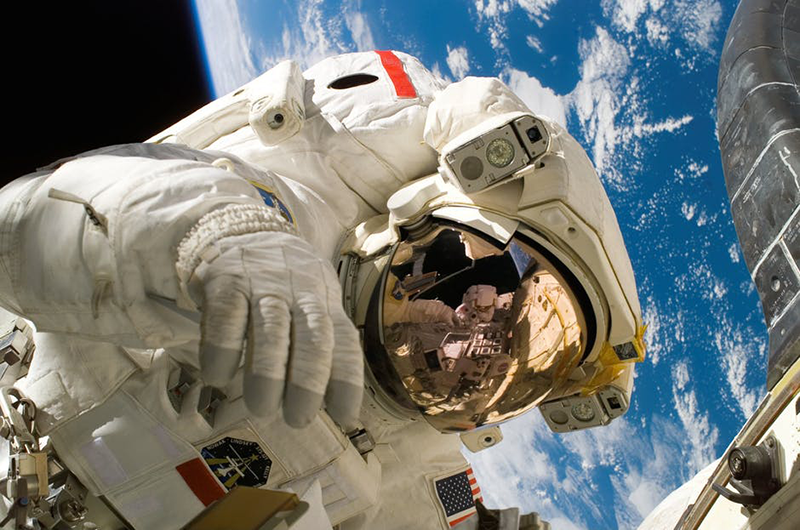It seems like IoT is taking over our lives. From smart homes, offices to hospitals and fitness trackers, IoT is everywhere. Anything, anywhere, has the potential to be connected to the IoT through smart devices like wearables.
Read more Astroskin Smart Shirt Will Monitor Astronauts’ Vital Signs in Space
Dialog Semiconductor, a UK-based manufacturer of semiconductor-based system solutions, takes pride on being on the cutting edge of wearable technology. The company’s ICs provide the power efficiency and small form factors needed to empower the latest in wearables. Dialog sees wearables as something that’s bridging the gap between people and electronics, in any environment – including outer space.
Life in space is particularly difficult. An astronaut, depending on his work, coupled with the environment, is especially in need of devices that provide quick, intuitive, tactile access to mission-critical and potentially life-saving data, all at a moment’s notice. Dialog is eagerly working toward the opportunity to power some of these devices.
“NASA’s Wearable Electronics and Applications Research (WEAR) Lab spearheads the agency’s efforts on developing and using wearables for space. Justin Bautista, who leads the WEAR Lab, was recently at Bluetooth World to talk about one of their biggest breakthroughs in bringing the health-tracking benefits of wearables to astronauts: the Personal CO2 Monitor,” reports Dialog Semiconductor.
Monitoring carbon dioxide is vital in the cramped compartments of the International Space Station and the spacecraft that transport astronauts there. High CO2 levels can make an astronaut sick causing high blood pressure, headaches, dizziness and even impaired vision.
Read more Real Spacesuits Are Extremely Expensive Wearables
Knowing how much CO2 astronauts are exposed to is critically important, and that’s the job for the Personal CO2 Monitor. It can track crew members’ CO2 levels and leverage commercial-off-the-shelf sensors to alert astronauts of any potential health dangers as they arise.
“The sky – and literally beyond – is the limit when it comes to unlocking the next level of what wearables can really do,” says Dialog Semiconductor.













